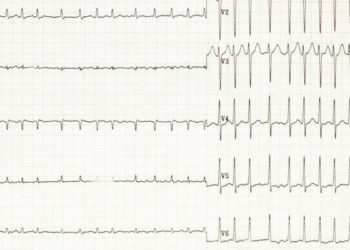Conventional Wnt signaling pathway is a potential new target for glaucoma therapeutics
Image: PD
Key study points:
1. In samples of trabecular matrix taken from glaucomatous eyes, induction of Wnt signaling pathway using WNT3a causes ß-catenin translocation into the cellular matrix. This translocation can be blocked by sFRP1, an inhibitor of the Wnt signaling pathway.
2. ß-catenin-mediated gene expression, including AXIN2 expression, is increased by exposure to WNT3a.
3. Inhibition of the Wnt pathway using sFRP1, increases intraocular pressure (IOP) in vivo in mice animal models.
Primer: Glaucoma is the second most common cause of blindness worldwide, affecting over 67 million individuals. Although its pathophysiology is still unclear, elevated IOP is the only modifiable risk factor. Many studies have shown that abnormalities in cell signaling within the trabecular meshwork (TM), the key tissue within the eye implicated in the pathophysiology of glaucoma, may contribute to the development of ocular hypertension. The Wnt signaling pathway has been of particular interest, and researcher findings in recent years suggest that abnormalities in this pathway may underlie the pathogenesis of primary open-angle glaucoma. The canonical Wnt pathway switches between an on & off state. In the off-state, a protein destruction complex, including molecules such as AXIN2 and APC, is formed, which subsequently causes the proteolytic degradation of ß-catenin. In the on-state, this protein destruction complex is dissembled, allowing ß-catenin to accumulate and translocate into the nucleus, thereby altering gene transcription.
Several Wnt signaling target genes have been identified as potential players in glaucoma pathogenesis. Specifically, previous studies demonstrated that an elevation in the secreted frizzled-related protein 1 (sFRP1), a known Wnt pathway inhibitor, could be found within the glaucomatous TM. Further, exogenous application of sFRP1 to perfused eyes has previously been show to cause ocular hypertension, which could then be reversed with the use of a small molecule inhibitor. The authors of this study sought to investigate the functionality of the Wnt signaling pathway in glaucomatous TM.
Background reading:
This [in vitro] study: Normal TM & glaucomatous TM cells were cultured from donor tissue. Cells in the experimental group were treated with or without 100 ng/mL WNT3a, a signaling molecule that activates the Wnt signaling pathway. Immunofluorescence was then performed on both the control and experimental group to localize ß-catenin and actin stress fibers and Western blotting was performed to assess levels of ß-catenin. TCF/LEF Luciferase reporter assays were used to assess changes in gene transcription with WNT3a treatment and qPCR assays were performed to assess expression levels of the Wnt/ ß-catenin target gene AXIN2. Finally, mice were infected with injections of adenovirus containing either control, sFRP1 or DKK1, another known Wnt pathway inhibitor, into their vitreous humor. IOP was then assessed using rebound tonometry.
Glaucomatous TM showed significant ß-catenin accumulation within the nucleus when treated with WNT3a. Further, treatment with WNT3a significantly elevated AXIN2 mRNA expression by 17-fold in glaucomatous TM (p<0.001, N=6) and increased luciferase expression (p<0.001, N=3), indicating increased gene transcription. Treatment of cells with sFRP1 blocked this gene transcription in a dose-dependent manner (p<0.001, N=3). Actin cytoskeleton components were not affected by WNT3a treatment, suggesting that it was indeed ß-catenin, not the noncanonical Wnt signaling pathways that were involved in IOP regulation. Finally, intravitreal injection of sFRP1 or DKK1 in mice was found to cause a significant elevation in IOP after seven days, approximately 50-67% (p<0.001, N=6 pairs).
In sum: WNT3a treatment to active the canonical Wnt signaling pathway successfully induced ß-catenin translocation into the cell nucleus and increased ß-catenin-mediated gene expression in TM cells. These findings confirm the presence of the canonical Wnt signaling pathway in TM cells. Further, inhibitors of this pathway reduce ß-catenin translocation in vitro and cause increase IOP in vivo, thus suggesting that excessive inhibition of the Wnt signaling pathway may be a possible mechanism underlying the development of ocular hypertension. Ultimately, such disturbances to Wnt signaling may alter the expression of important target genes involved in glaucoma pathogenesis, or possibly via changes in the cell-cell junction.
Strengths of this study include the use of multiple assays to survey the Wnt pathway, including immunofluorescence, reporter genes, and mRNA expression assays. In addition, the in vivo data provides a critical, clinical connection to glaucoma, as inhibition of the Wnt pathway significantly altered IOP. However, limitations of this study include the lack of clarity regarding how abberations in the Wnt pathway may actually cause IOP alterations, though the authors did note that cytoskeleton alterations do not appear to be involved based on their data. In addition, the authors appear to rule out the presence of noncanonical Wnt pathways, yet inhibitors of Rho kinase, a component of such pathways, is currently being investigated as potential glaucoma therapeutics. Additional experiments will be needed to further assess this issue.
Click to read the study in IOVS
Click to read an accompanying editorial in IOVS
By [SSS] and [MK]
© 2012 2minutemedicine.com. All rights reserved. No works may be reproduced without written consent from 2minutemedicine.com. DISCLAIMER: Posts are not medical advice and are not intended as such. Please see a healthcare professional if you seek medical advice.




